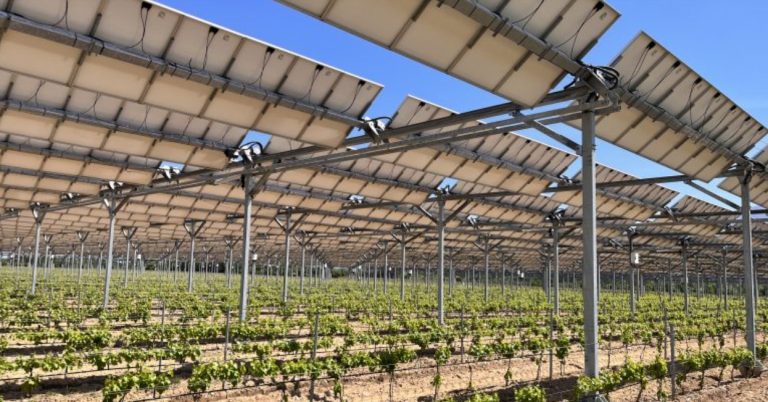An agricultural field with photovoltaic installations. Photo credit: MENDELU
Brno, 26 Aug (BD) – The development of photovoltaic systems is still hampered by high prices and an unresolved legislative framework, but in the future they should represent a key alternative energy source and stabilise the economic situation of farmers. Photovoltaic panels are used not only to generate sustainable energy, but also to provide shade for cultivated crops during the summer months and protect flowers and fruit from hail, heavy rain and frost.
“One of the goals of this trend is to increase the usability of agricultural land in particular. In addition to this, agri-voltaics bring us a number of benefits, both direct and indirect, thanks to the combined use of the area primarily for agricultural production and the secondary use for electricity production through photovoltaic plants,” said Ondřej Polák from the Institute of Plant Breeding and Medicine at MENDELU’s Faculty of Agronomy.
The combination of photovoltaics with agriculture is possible and has been gradually developing in France, the Netherlands and Germany for several years. Some projects show that it is possible to produce clean energy on agricultural land without affecting its main function of food production. The first large-scale project is now being prepared in the Czech Republic thanks to Zenergo Energy s.r.o., experts from MENDELU, the Czech Technical University in Prague, and the Holovousy Institute of Pomology Research (VSÚO Holovousy s.r.o).
This and other information is currently being evaluated with the aim of building the largest agro-voltaic installation in the country, covering three hectares for the production of permanent crops. “In addition to this, we are also preparing the area with different types of photovoltaic panels for research activities for growing other crops and not just permanent crops,” Polák said. He said that investors are ready to build the agro-voltaic plant even without incentives. The intention is complicated by the energy crisis and the war in Ukraine; panels are scarce, delivery times are getting longer and prices are higher than last year. Added to this are coercive measures in China, the world’s largest producer of photovoltaic panels, and problems associated with supply and demand chains.
“At the moment, the biggest obstacle is the legislative framework; photovoltaic plants built on land belonging to the agricultural fund must meet the land protection conditions defined by law. For this reason, the Ministry of the Environment is working hard to prepare an amendment to the Agricultural Land Protection Act, so that farmers of selected crops can access easier support for agri-voltaics, in particular by eliminating the levy payment. This solution will reduce the overall cost of investment and allow them to benefit from PV subsidies,” said Polák.







